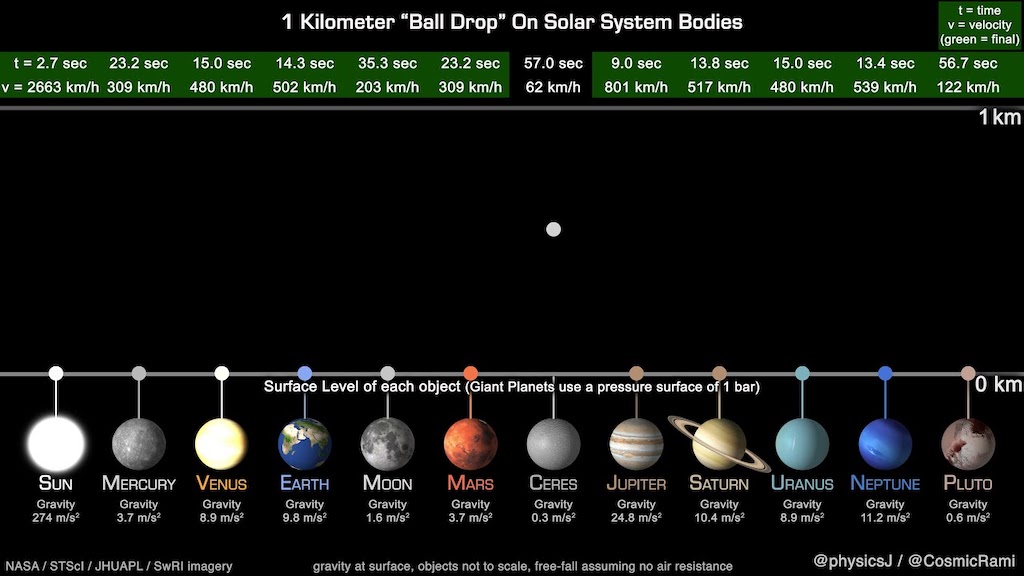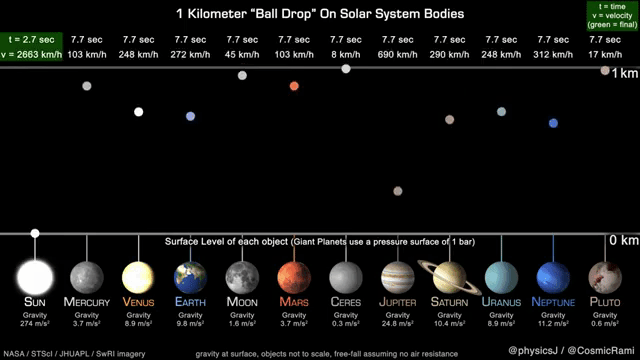A Fascinating Animation Demonstrating the Gravitational Pull of the Planets in Our Solar System

Dr. James O'Donoghue, a Planetary Astronomer at JAXA (Japan Aerospace Exploration Agency), who previously created a brilliant animation regarding rotational speed and axial tilts of the planets in our solar system, conducted a similar animation in which a ball was dropped from 1000 meters (3,280.8 feet) to the surface of each planet, as well as the Sun, Moon, Ceres, and Pluto, in order to demonstrate their varying gravitational pulls. These gravitation pulls indicate the density of various bodies in our solar system despite their vast difference in size.
Related PostsThe Planetary Chocolates of the Solar SystemA Colorful NASA Animation That Explains ExoplanetsEvery Other Planet in the Solar System Would Fit Between the Earth and MoonThe Space Song, A Catchy Animated Educational Song About the Planets of the Solar SystemRiding Light', A Stunning Film That Follows a Single Photon of Light Across the Solar System in Real TimeThe Sun's Beautiful, Violent Surface In ActionIt might be surprising to see large planets have a pull comparable to smaller ones at the surface, for example, Uranus pulls the ball down slower than at Earth! Why? Because the low average density of Uranus puts the surface far away from the majority of the mass. Similarly, Mars is nearly twice the mass of Mercury, but you can see the surface gravity is actually the same... this indicates that Mercury is much denser than Mars.
Follow Laughing Squid on Facebook, Twitter, and Subscribe by Email.
The post A Fascinating Animation Demonstrating the Gravitational Pull of the Planets in Our Solar System first appeared on Laughing Squid.
